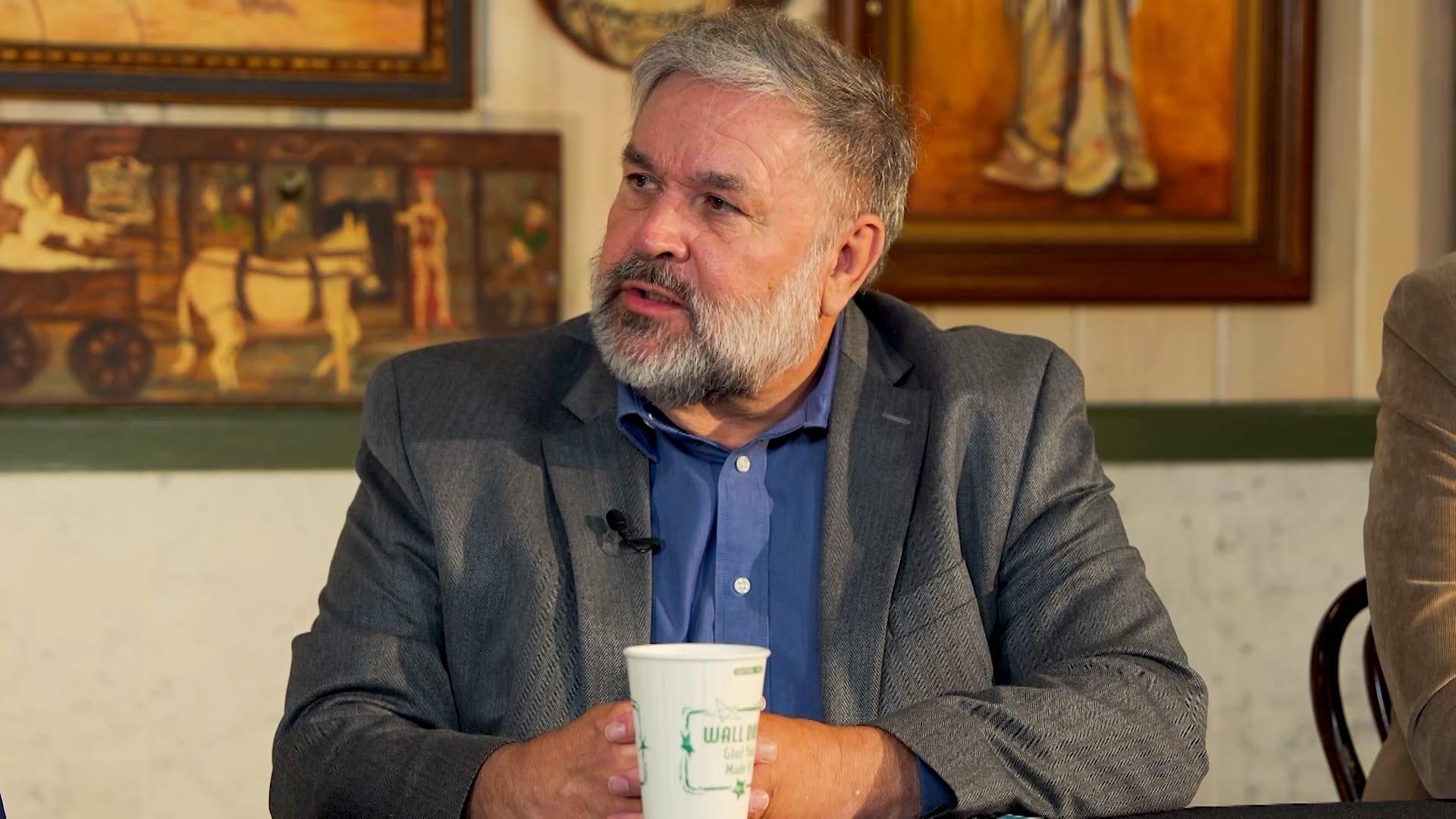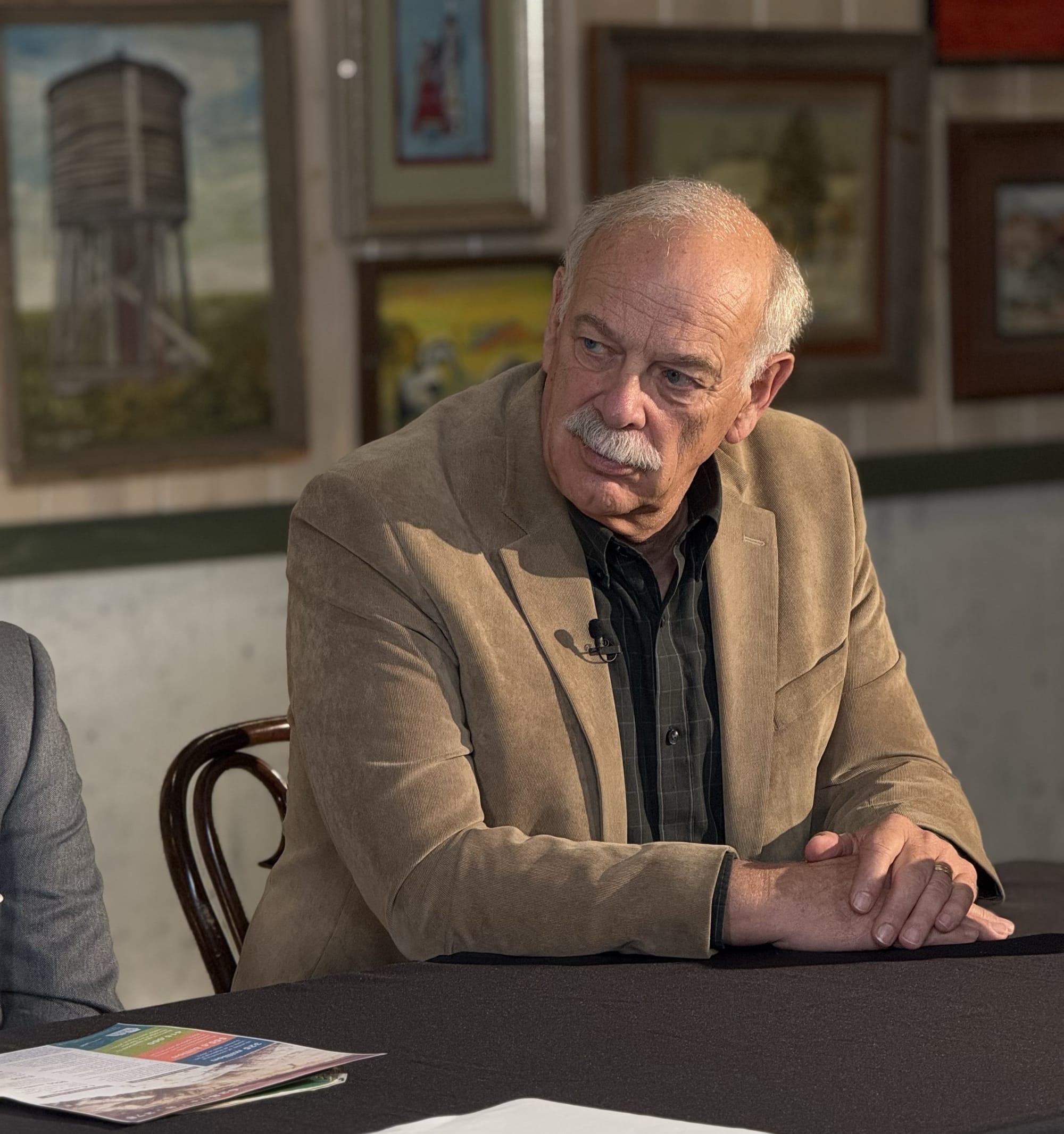
Jackie Hendry, South Dakota News Watch
WALL, S.D. – Despite consistent visitation in recent years and record-breaking visitor spending, critical South Dakota tourist attractions remain subject to broader concerns as the peak tourist season begins.

The most common challenge is finding adequate workforce. A panel discussion featured in an upcoming episode of SDPB’s “South Dakota Focus” brought current and former leaders of three major West River attractions together to discuss the workforce needed to handle the busiest months for visitors.
Homegrown attraction relies on international workforce
Sarah Hustead is the fourth-generation leader and vice president of Wall Drug, which began with her great-grandparents in 1931. Famous for its free ice water, 5 cent coffee, fresh donuts and roadside signs around the world, Wall Drug boasts more than 2 million visitors a year. The surrounding community of Wall is home to about 800 residents.
According to Hustead, Wall Drug has about 70 year-round employees and must hire roughly 120 additional workers to manage the influx of visitors during the peak summer months.
American college students used to make up most of those seasonal workers. Hustead said that changed gradually over the past couple decades.
“As internships became more important, we saw less and less college students applying,” she explained.

Today, some of the seasonal workforce at Wall Drug is made up of local high schoolers and traveling work campers, like those featured in the Academy Award-winning 2020 film “Nomadland.”
But many seasonal workers come to Wall Drug through the H-2B work visa process. That program is set aside for foreign nationals to fill temporary, non-agricultural positions.
“We really count on those workers,” said Hustead. “Since it’s a lottery system, it’s kind of luck of the draw. It seems like we’re having more trouble after they’ve been approved. To get those visas at the embassies – just everything is taking a little bit longer.”
Because the H-2B visa process can be lengthy, Wall Drug begins the process of applying for seasonal workers in October. By January, Hustead typically learns the business’s standing in the visa lottery system and how soon those workers will arrive for the busy summer months.
“We also use the J-1 visa program, which is for students,” said Hustead. “That program is much easier and has been going really well for us.”
The visa programs have made Wall a temporary home for workers from Thailand, Kazakhstan, Mongolia, Jamaica and more.
“It’s really fun because you’re in a tiny town and it’s just a melting pot,” said Hustead. “Learning so much about different cultures every year is really awesome.”
The story at Badlands and Mount Rushmore
Visitors can find an entrance to Badlands National Park just a few minutes south of Wall. It’s the first national park Mike Pflaum ever visited as a 6-year-old from Minnesota.
“That memory of going to the first overlook and going, ‘Wow!’ has stuck with me for my entire life,” said Pflaum.

His life went on to include a four-decade career with the National Parks Service, including time as the superintendent of Badlands National Park. Today, Pflaum serves as special adviser for the nonprofit Badlands National Park Conservancy and is president-elect of the Association for National Park Rangers.
Pflaum explained most national parks like Badlands have a core group of permanent employees.
“Every year we would hire as many seasonal employees as the budget allowed to do everything from fee collection to emergency services to operating the visitor center desk to doing visitor programs and maintaining facilities and much more,” said Pflaum.” So in many cases, it was the seasonal employees who would be the face of the park.”

Dan Wenk agrees. He spent a portion of his own 40-year career with the National Parks Service as superintendent of Mount Rushmore National Memorial. Wenk is now on the board of directors for the Mount Rushmore Society, the nonprofit organization that partners with the NPS to preserve and enhance the memorial and surrounding exhibits.
“We relied on people who would come back year after year,” Wenk said of seasonal workers. “They would know the park. They would know the stories. They would know the educational side of what they were going to do. And they’d also understand what they needed to do and how they were going to contribute to the efficiency and the things that people have come to experience and to love about national parks.”
February layoffs mean long-term uncertainty
Like Wall Drug, federally controlled attractions like Badlands National Park and Mount Rushmore start their seasonal hiring process several months in advance.
When the Trump administration instituted a hiring freeze for the National Parks Service, followed by the sudden layoffs of 1,000 probationary NPS employees in mid-February, Pflaum watched with growing concern.
“I would say because of the confusion over if we can hire, when we can hire – things got going a little bit late,” said Pflaum.
The initial concerns over adequately staffing the 2025 peak visitor season have lessened. Following the February layoffs, the Trump administration permitted National Park Service to fill up to 7,700 seasonal positions nationwide.
“I think what we know now is that we will have a seasonal workforce,” Wenk said in late April. “What we don’t know is how that’s going to translate into the visitor season because many of the seasonal employees were those longtime seasonal employees who came back year after year. When the uncertainty arose in terms of if they had a job and would it last, many very highly qualified people decided to do something else.”
That uncertainty has extended beyond seasonal employees.
“Many senior managers and others have accepted early retirements or taken a resignation,” said Pflaum. “I don’t think that’s going to be a noticeable impact for the summer, but I think it has ramifications for the long-term management of our national parks.”
Housing workers and finding home
Housing seasonal employees is another challenge federally managed and private businesses have in common. Pflaum explained the National Park Service offers housing for rent but not enough for all seasonal workers in a given location.
“Housing is a perennial issue in many national parks, and I’m going to say it certainly is at Badlands,” he said. “People accept positions without housing available.”
In the case of Badlands National Park, that leaves those employees to look for housing in rural nearby towns like Interior, Kadoka, and Wall – all with limited rentals available.
In contrast, Hustead said the family-run attraction takes pains to house all of its seasonal employees.
“I’m somewhat swimming in Badlands’s wake where if they can’t house someone, maybe I’ll get the employee,” Hustead explained. “We own a trailer court in town and then we’ve acquired quite a few houses around town, and the management that goes into housing all the employees is pretty extensive.”
Even for year-round employees, Hustead said providing housing is a significant recruitment tool.
Personally, Hustead appreciates the sense of community across the broader tourism industry, even if there can be an element of competition.
“If I have a customer coming through and they’re not stopping at the Badlands, I’m like, ‘You can’t come here and not go through the Badlands!’ And I hear that from other business owners that they’re sending them my way,” said Hustead.
Both Pflaum and Wenk worked in various positions with the National Parks Service across the country in their careers, and both chose to retire in South Dakota to continue promoting and preserving the lands they came to love. Wenk suspects they’re far from the only ones.
“I think we do have in South Dakota more and more amenity migrants – people who are coming from other places to come to South Dakota because of the amenities that we have,” he said. “And the public lands are part of that.”
